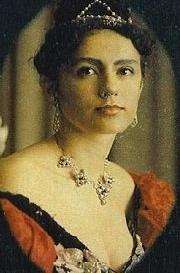Emma Forsayth

Emma Eliza Coe (26 September 1850, in Apia – 1913, in Europe), known also as "Queen Emma of New Guinea", Emma Forsayth, Emma Farrell and Emma Kolbe was a business woman and plantation owner of mixed American/Samoan descent.
Biography
Emma Coe was born to Jonas Myndersse Coe, a US Commercial Representative to American Samoa and Joana Talelatale, a Samoan belonging to the Malietoa dynasty. Her mother’s bloodline was related to the Moli tribe and Emma was recognized by the Malietoa as a princess. In 1869, she married James Forsayth, a Scottish seaman and they set up a shipping and trading business in American Samoa. Emma was involved in island politics with her father and lost favor with the local people after he was deported in 1876. Around this time, her husband was said to be lost at sea, however there was no confirmation that her husband was dead.
In 1878, she left American Samoa with an Australian lover, James Farrell, who was known as a blackbirder, captain and trader for the Duke of York Islands in between New Britain and New Ireland. There they traded mainly copra with the local population for beads, tobacco, knives and mirrors. The area was largely unsettled by Europeans up until that point due to aggression from the local inhabitants.
Emma and Farrell were to assist people that were involved in the Marquis De Rays incident where over 500 people were swindled out of their life’s savings to form a new colony at the South Eastern tip of New Ireland. Four ships sailed from France between Jan 1880 – Aug 1881, the Chandernagore, Genil, India and Neu Bretagne. This practically marooned the colonists whilst the founder reported the progress of the colony in an extremely positive light in his newspaper La Nouvelle France in Paris. Emma and Farrell assisted the marooned colonists back to Australia. De Rays was later tried and found guilty of fraud in France.
In 1881, Emma became interested in land around the Gazelle Peninsula of New Britain and differed with Farrell who continued trading. Emma bought the land from the local chiefs and with the assistance of her brother in law, the Dane, Richard Parkinson, set up a large coconut and cocoa plantations around Kokopo, East New Britain. During this period, she became highly successful and well respected. She was known as a heady woman, known to affect her charm on others and for throwing outlandish extravagant parties aided by her nieces. She was the envy of the German colonists who started to move into Kokopo around 1890 and passing trades ships. It was during this period she became affectionately known as the “Queen of New Guinea”.
Commercially from 1880–1900 years, her enterprises in Kokopo surpassed most in the region and the pacific and she was most certainly the commerce queen of New Guinea.
Her commercial empire was still in full swing when towards the end of 1907 she learnt of increasing tensions between Germany and Britain in the colonies and Europe. She sold off most of her assets in 1909 to Heinrich Walen. She later lived in Sydney and died in 1913 in Europe by the bedside of her estranged husband Paul Kolbe. Her ashes were buried in her old station cemetery “Gunantambu” at Ralum. Today the site of the Ralum Club in Kokopo, New Britain, Papua New Guinea.
Legacy
Forsayth is portrayed by Barbara Carrera in the 1988 television serial Emma: Queen of the South Seas, which was directed by John Banas for Australia's Network 10. She is featured in Christian Kracht's 2012 novel Imperium, which focuses on August Engelhardt.
Further reading
- Parkinson, Richard (Author), White, J. Peter (Editor), Dennison John (Translator). Thirty Years in the South Seas: Land and People, Customs and Traditions in the Bismarck Archipelago and on the German Solomon Islands (Hardcover) ISBN 0-8248-2245-5
References
- Robson, Robert Williams. (1994) [1965]. Queen Emma: The Samoan-American Girl Who Founded an Empire in 19th Century New Guinea. Coorparoo, Qld: Robert Brown & Associates. ISBN 1-86273-080-1. (Also published 1973, Pacific Publications, ISBN 978-0-85807-012-7.)